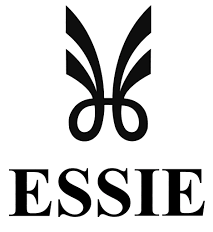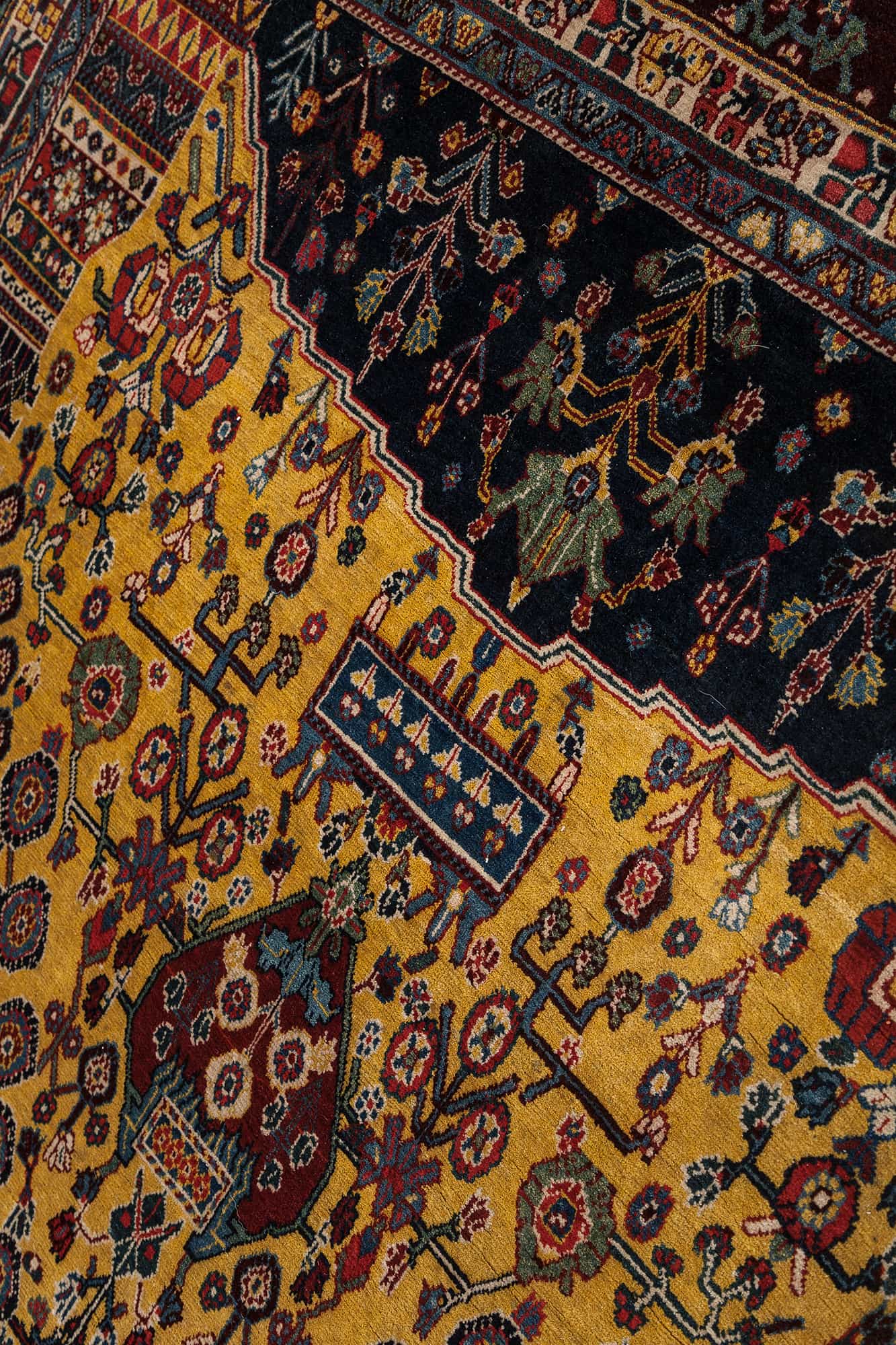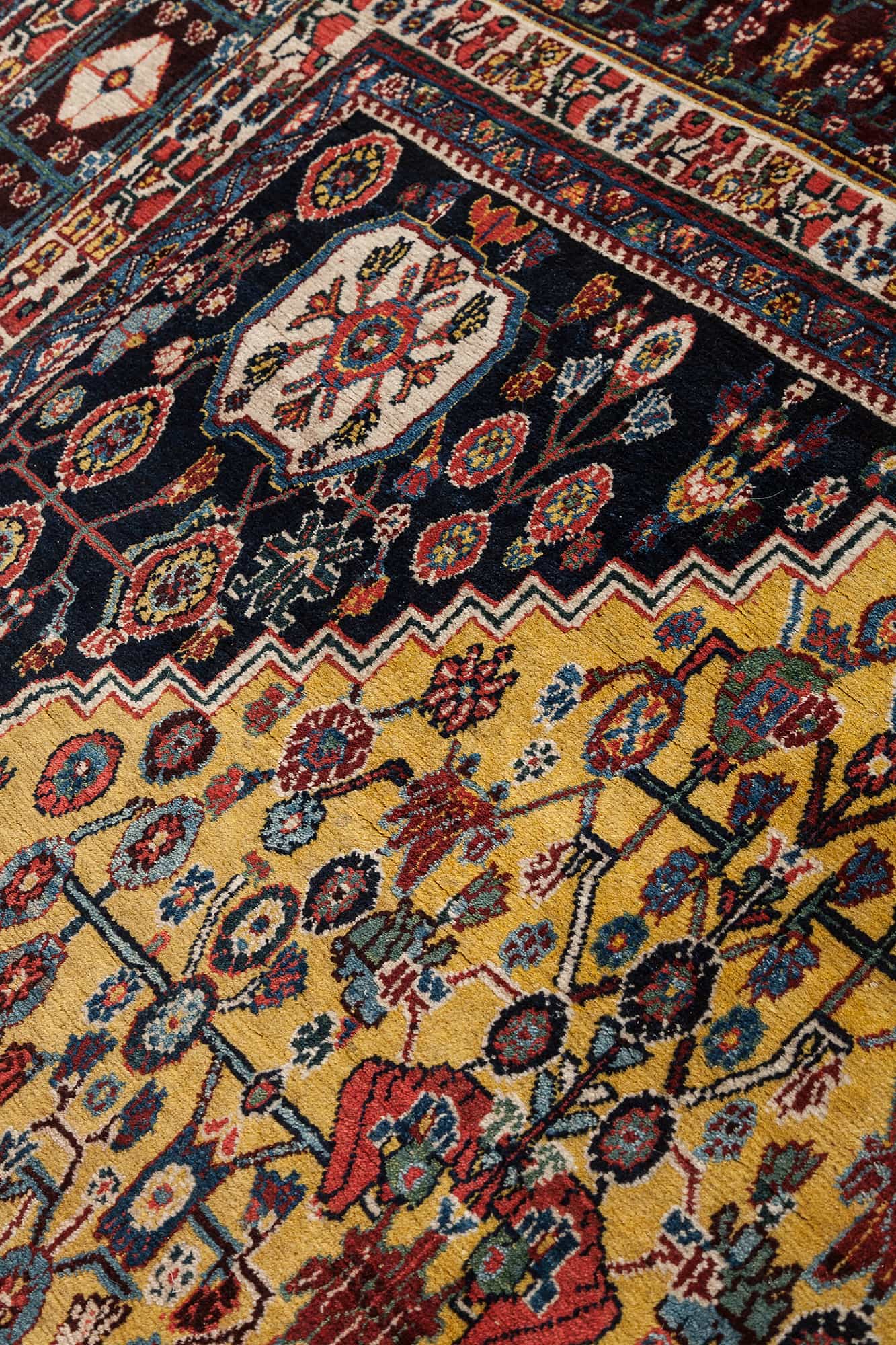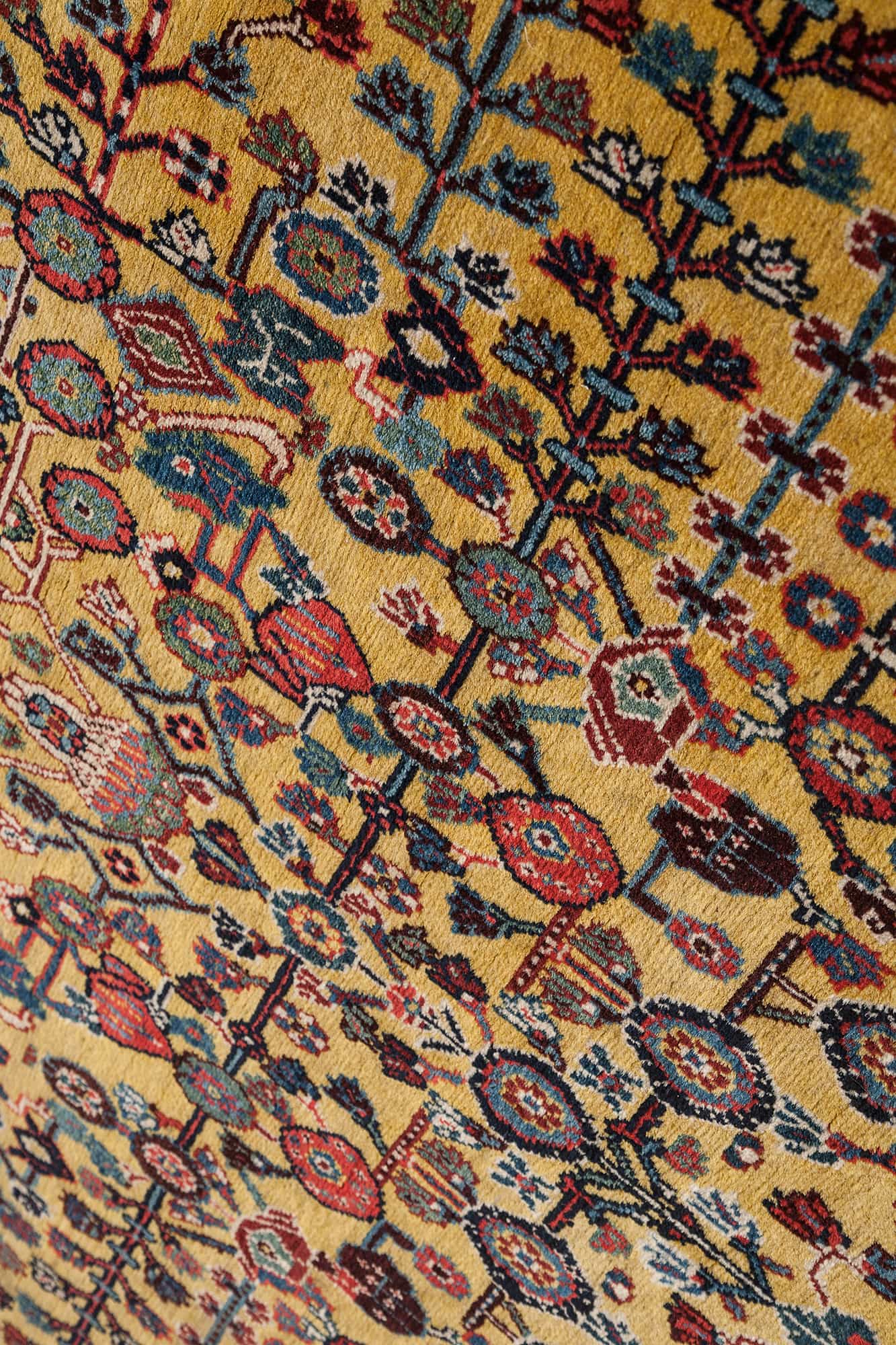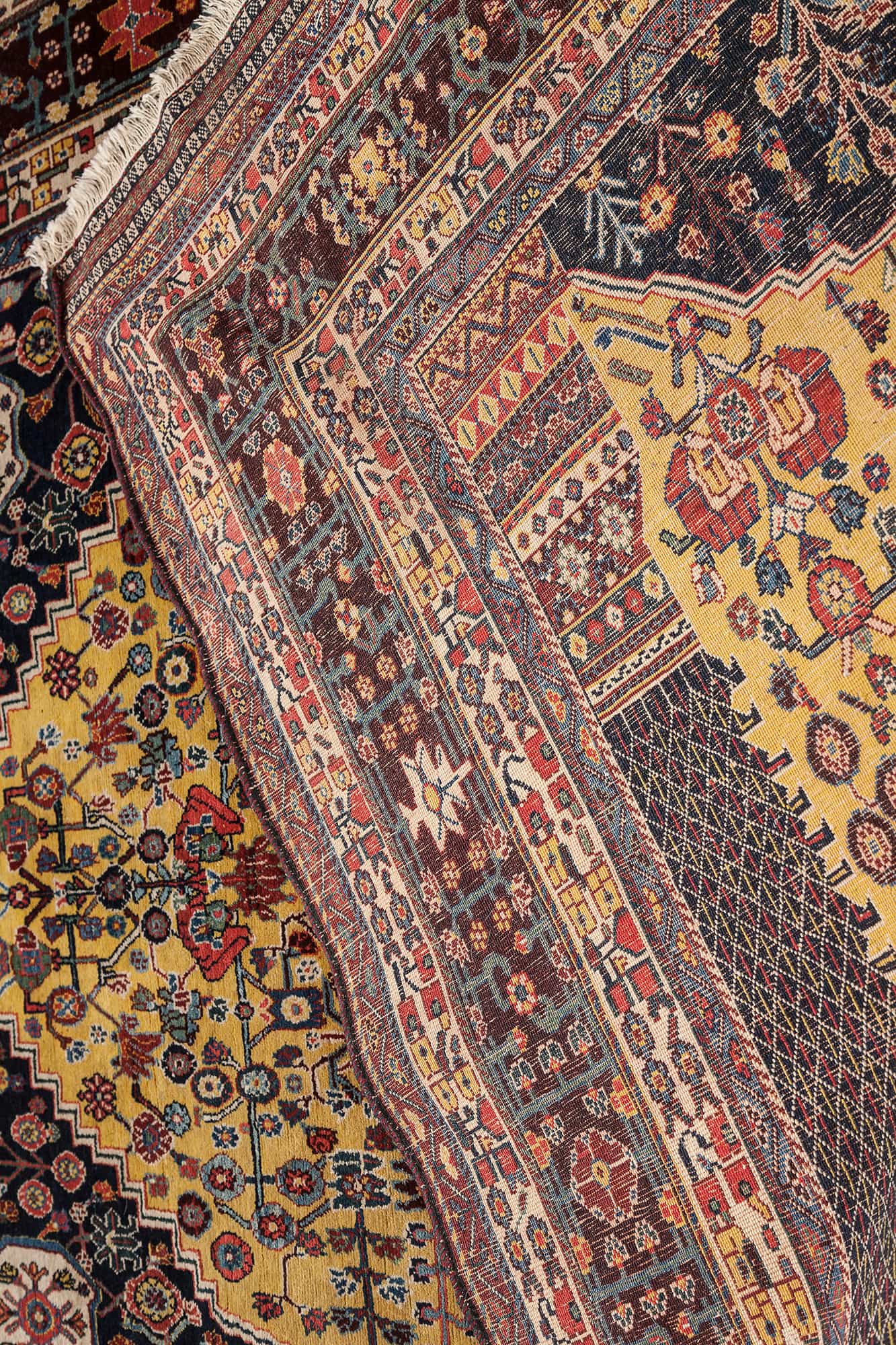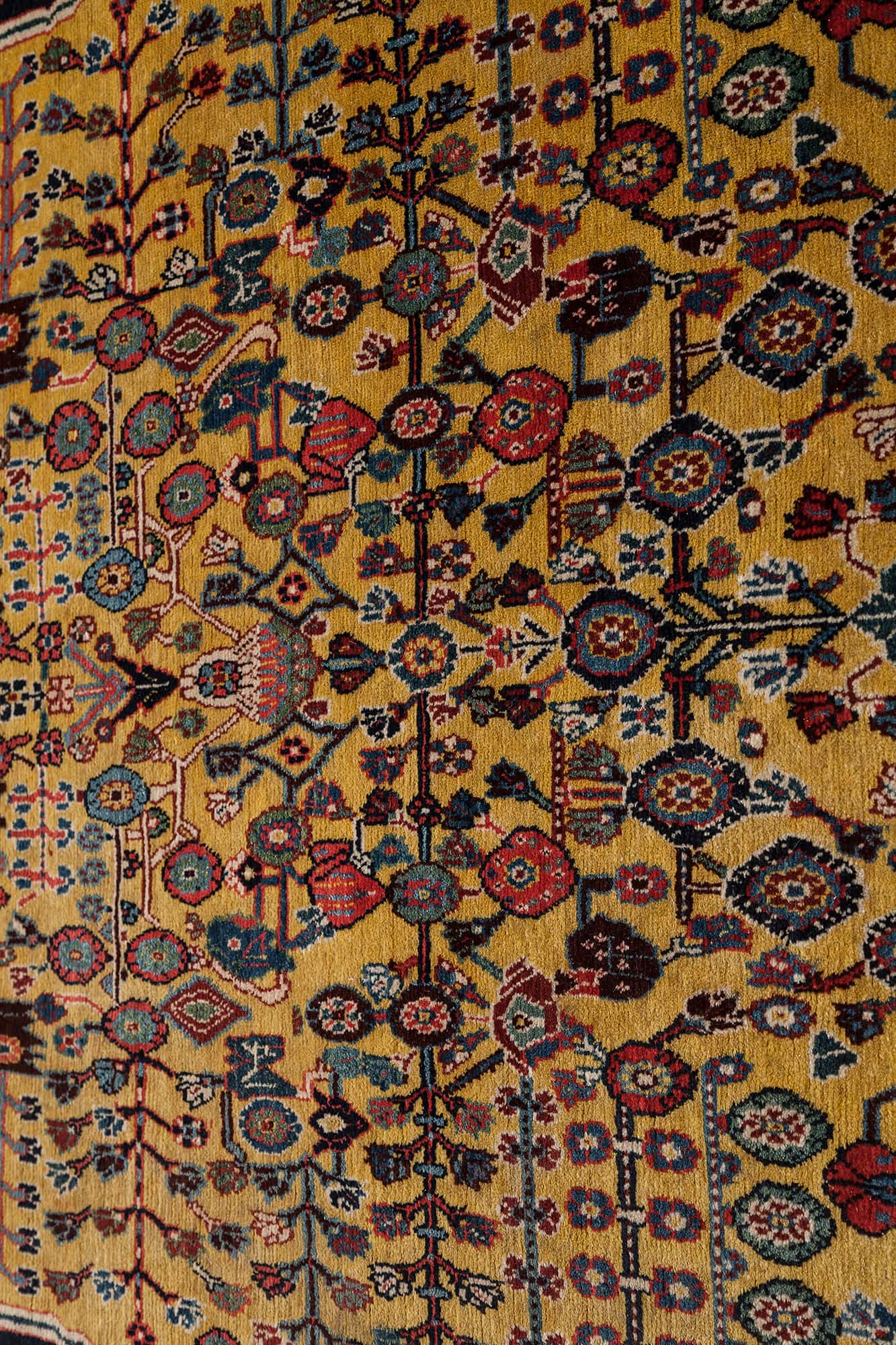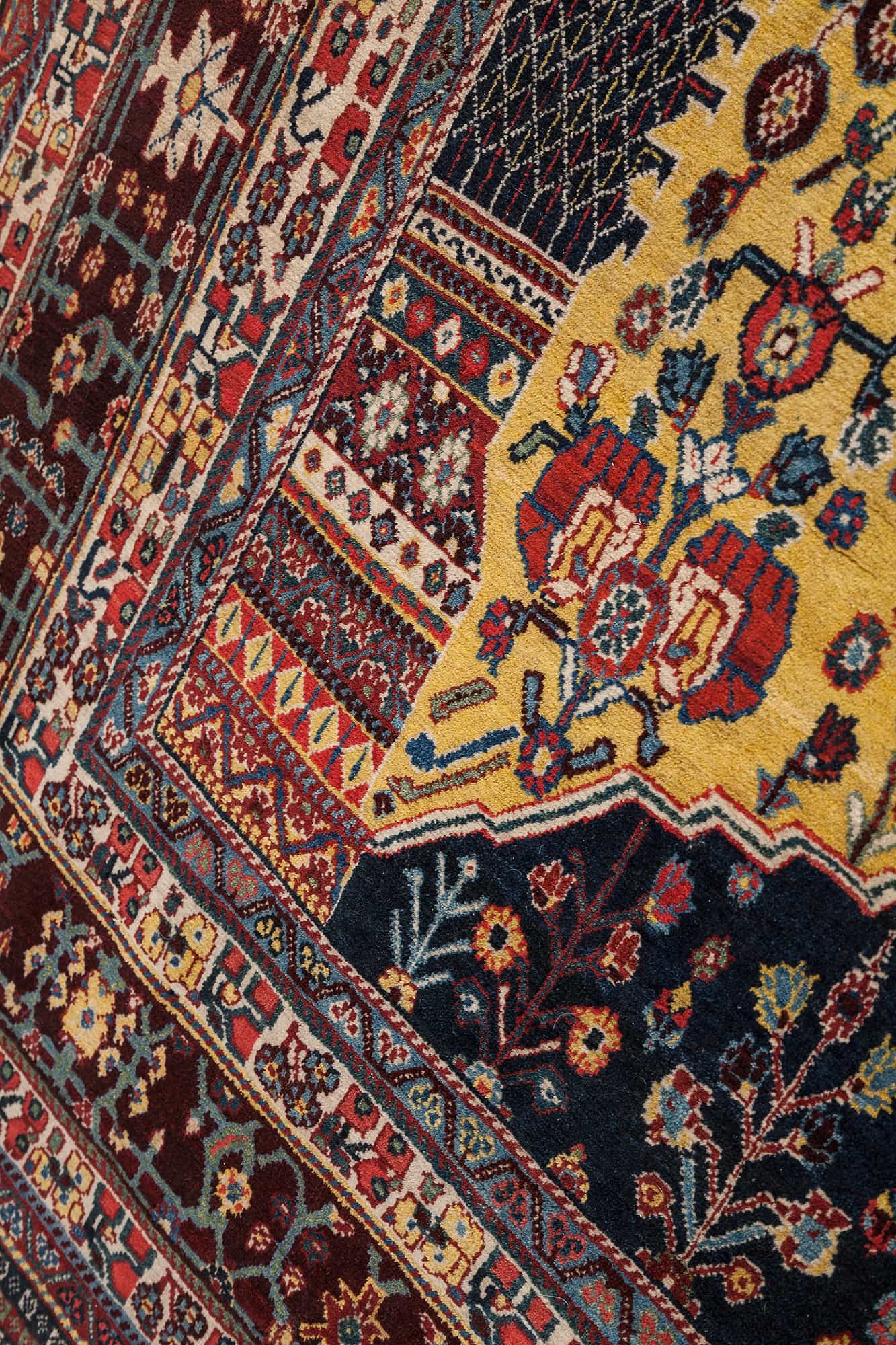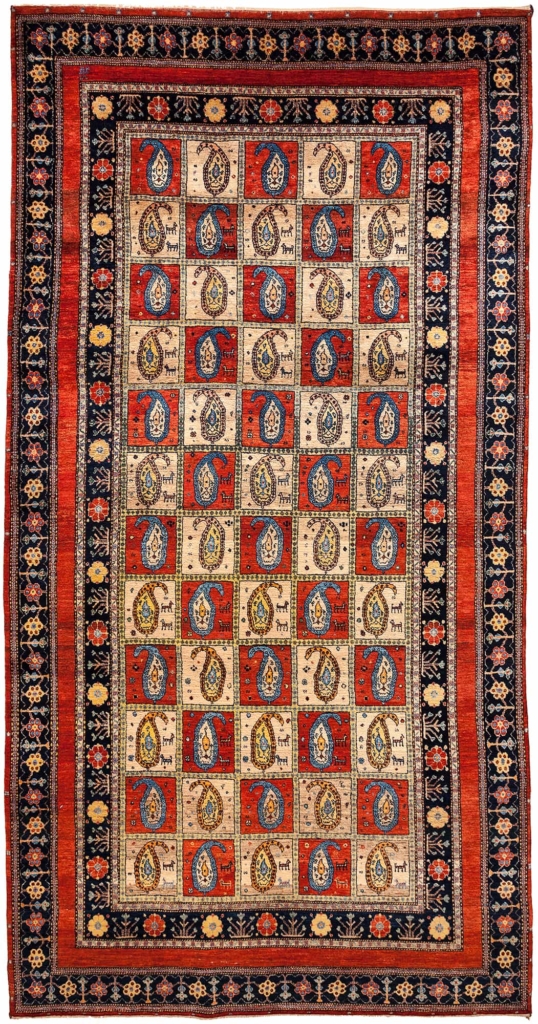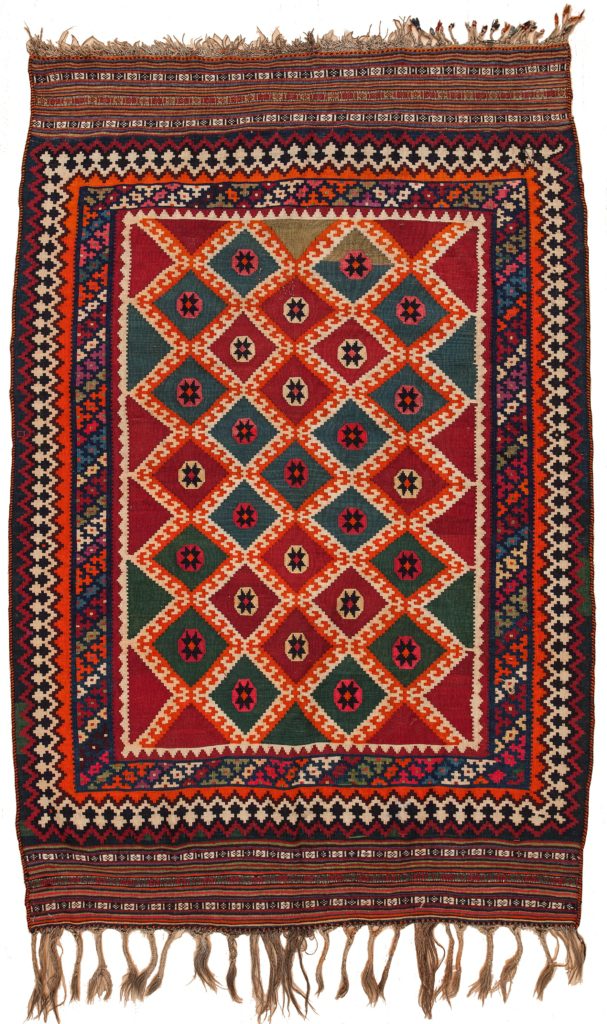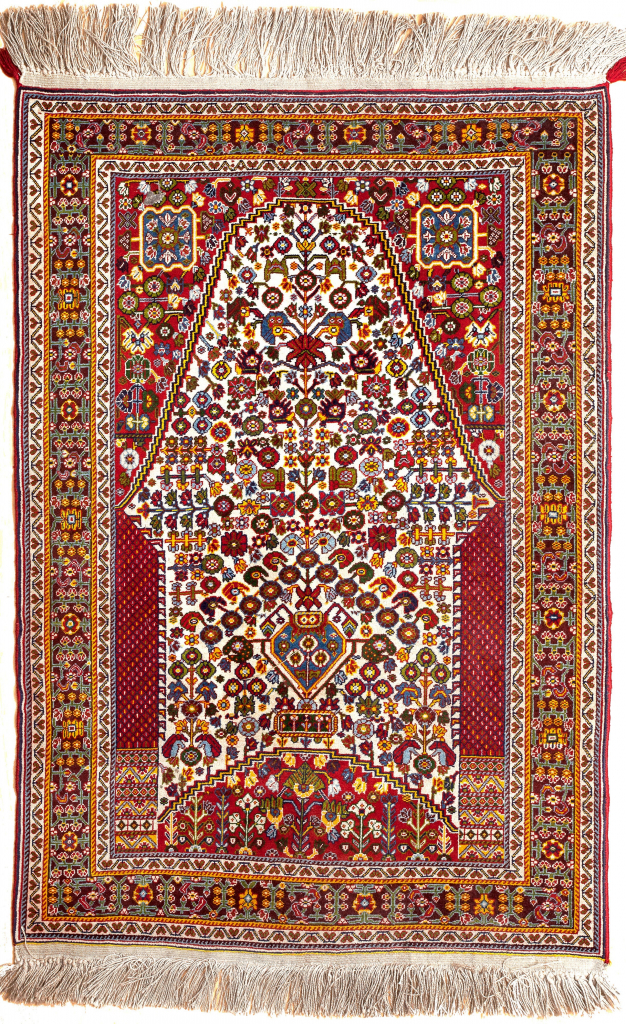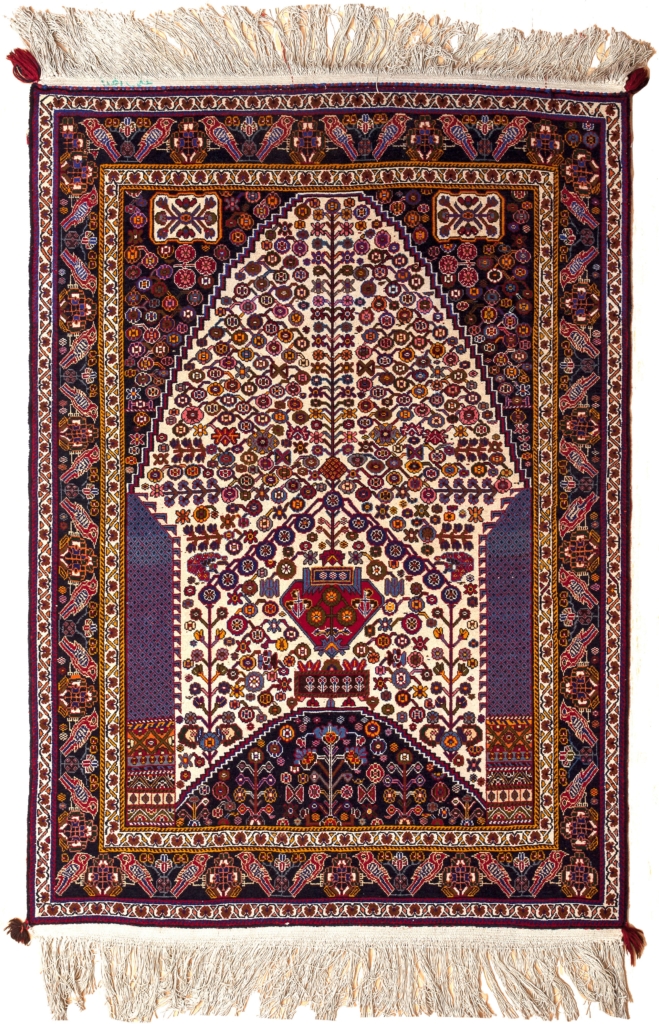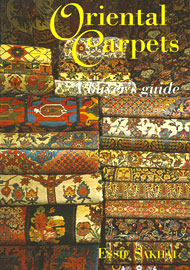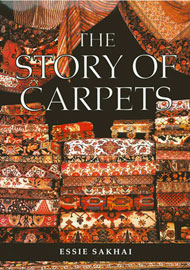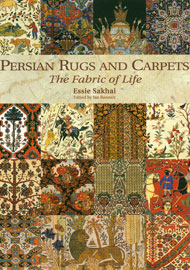Qashqai Qashqooli Rug
Rug #2170Qashqai Qashqooli Rug Allover design Fine Wool
A Fine and Rare Persian Qashqai ‘Kashkouli’ Prayer Rug, Fars province, South West Persia, Wool on Cotton Foundation
Early 20th Century
The yellow mihrab with an ogival vase issuing angular vines ending in millefleurs flanked by cypress trees, blue spandrels with ivory flower heads supported by flowering angular vines, within a deep aubergine border enclosing continuous angular vines linking stepped flower heads alternating with flower head roundels
The Persian Ghashghai tribal group are a historically significant ‘confederacy’ which is made up of a group of once independent tribes inhabiting different areas within the south-west province of Fars. Fars was once the ancient kingdom of Pars, home to the important Persian royal city of Takht-i Jamshid and more familiarly known to us, from ancient Greek, as Persepolis; In turn, Persepolis, a ruin which is now a world heritage site and close to the present day marketing town of Shiraz.
In brief, these independent tribes were formed into a confederacy in the 18th century by the then government to stop the tribes fighting and squabbling amongst themselves and enabling a single head to be identified and made responsible for maintaining the peace with the aim of collecting taxes and providing well trained equipped soldiers if needed for the greater good. Despite their formal recognition in the 18th century, the tribes had been intermarrying and forming localised confederacies amongst themselves long before this official recognition, confirmed by the growing use of the Ghashghai title from the 16th century onwards.
The principal tribes that make up the Persian Ghashghai confederacy and which are known as weavers of rugs and woven artefacts such as bags and animal trappings, are the Kashkuli, Amaleh, Darrehshuri, Shish Boluki and Sherkalu. These are known as the ‘taifeh’ or principal tribes which can in turn be broken down into ‘tireh’, or sub tribes, namely the Bollu and Igde. Other tribal groups in the Fars area are the Lors and the Khamseh, and there are times when rug patterns, and motifs generally associated with one group can be cross fertilised and used by other groups of tribal weavers, which can occasionally muddy the waters in attribution.
Inevitably in Persian Ghashghai rugs, the styles of designs, the motifs, compositions and colours are shared amongst the entire group creating an accepted homogenous style. There are certain motifs and styles of representation that can be attributed to a taifeh, and even a tireh.
This fine Persian Ghashghai prayer rug is from a specific identifiable group, classified as ‘millefleurs’ prayer rugs. This group of weavings are attributed to the Kashkouli taifeh, made in village workshops by highly skilled settled weavers. These Persian Ghashghai prayer rugs are finely woven with dense knotting on a cotton foundation allowing for fine detailing to be created. This fine example displays wonderful characteristic geometrically drawn pattern motifs presented in an extensive range of sarturated jewel like colours against a rich saffron yellow back ground. Yellow is not a frequently seen background colour, though when seen presents a magnificent backdrop to create a highly decorative image. Intriguingly the design is closely based on a rare and important small group of Moghul Indian prayer rugs made in Kashmir in the 18th century. Examples of these Moghul Indian prayer rugs are in the Osterreichisches museum fur Angewandte Kunst, Vienna, and in the Metropolitan museum of Art, New York. It seems likely that this design was introduced to the Persian Ghashghai weavers as a result of the military campaigns of the adventurist Nadir Shah Afshar, who sacked Delhi in 1739. Nadir Shah Afshar was based in Fars, so it seems reasonable to suppose this identifiable design was adopted by the Ghashghai weavers.
This Persian Ghashghai millefleurs prayer rug is a superb example from this small recognisable group of weavings, technically finely woven with soft lustrous wool, by highly experienced skilled weavers with the detailed pattern applied to a magnificent rarely seen yellow background.
Qashqai Qashqooli Rug. This piece was handwoven in Qashqai , Iran. For further information please contact us and our team will be pleased to assist you. All pieces in the collection are under the auspices of Essie Sakhai, one of the world’s foremost experts and collectors of fine handmade Persian rugs and carpets.

Delivery
Delivery
Enjoy Complimentary Express Delivery at Checkout
Free express next-day delivery on all UK orders.
Free express delivery on all international orders above £2,000.
Estimated Delivery Times
Please allow between 1-3 days for UK, Europe and United States destinations and 5-7 days for Far East, South America, Middle East destinations.
Please note that orders placed after 12pm (UK time), on the weekend, or during holidays will be processed on the following business day. You will be provided with a shipping tracking number once your order has been shipped.
Collection from our Mayfair London showrooms
In-store collection will be ready within 1 business day. To collect in-store you will be required to show confirmation e-mail, official photo ID (passport or driving license) and the payment card used for the order. If someone else is collecting on your behalf, please make sure they bring a letter of authorisation that permits this person to collect on your behalf, official photo ID of the purchaser and of the person collecting and confirmation e-mail.

Exchanges
Exchanges
Essie Carpets offers clients a lifetime exchange service on any items purchased from us should you wish to change your carpets at any time in the future, subject to the item being in good condition; this can be particularly useful when redecorating your home, or when an upgrade in type or quality is desired.

Payment
Payment
Payments are accepted via credit card or debit card with a valid billing and shipping address*. Accepted credit cards are Visa, American Express, and Mastercard. When placing an order, your billing address must correspond to the address of your credit card, or we will not be able to process your order.
Bank Transfers are also accepted; in order to pay by Bank Transfer, please contact our Client Services via telephone at +44 20 7493 7766 or e-mail at sales@essiecarpets.com.
All transactions are secured. The Essie Carpets website is provided with an SSL encryption system to protect personal and payment data.
Similar Carpets
-
 Persian Qashqai Kilim 302 x 165 cm
Persian Qashqai Kilim 302 x 165 cmRug #1724 Persian Qashqai Kilim
£3,500.00
Persian Qashqai Kilim
-
 Very Fine Persian Qashqai Gallery Runner 406 x 212 cm
Very Fine Persian Qashqai Gallery Runner 406 x 212 cmRug #2374 Very Fine Persian Qashqai Gallery Runner POA
Very Fine Persian Qashqai Gallery Runner
-
 Qashqai Kilim 222 x 145 cm
Qashqai Kilim 222 x 145 cmRug #1381 Qashqai Kilim POA
Qashqai Kilim
-
 Persian Qashqai Runner 200 x 65 cm
Persian Qashqai Runner 200 x 65 cmRug #1337 Persian Qashqai Runner
£1,950.00
Persian Qashqai Runner
-
 Fine Qashqai Kashkooli Rug 150 x 100 cm
Fine Qashqai Kashkooli Rug 150 x 100 cmRug #075 Fine Qashqai Kashkooli Rug
£7,500.00
Fine Qashqai Kashkooli Rug
-
 Qashqai Rug 150 x 106 cm
Qashqai Rug 150 x 106 cmRug #084 Qashqai Rug POA
Qashqai Rug
